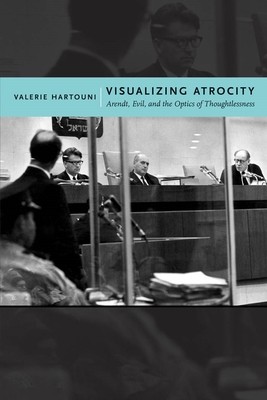
- We will send in 10–14 business days.
- Author: Valerie Hartouni
- Publisher: New York University Press
- ISBN-10: 0814769764
- ISBN-13: 9780814769768
- Format: 15 x 22.6 x 2 cm, minkšti viršeliai
- Language: English
- SAVE -10% with code: EXTRA
Reviews
Description
Visualizing Atrocity takes Hannah Arendt's provocative and polarizing account of the 1961 trial of Nazi official Adolf Eichmann as its point of departure for reassessing some of the serviceable myths that have come to shape and limit our understanding both of the Nazi genocide and totalitarianism's broader, constitutive, and recurrent features. These myths are inextricably tied to and reinforced viscerally by the atrocity imagery that emerged with the liberation of the concentration camps at the war's end and played an especially important, evidentiary role in the postwar trials of perpetrators.
At the 1945 Nuremberg Tribunal, particular practices of looking and seeing were first established with respect to these images that were later reinforced and institutionalized through Eichmann's trial in Jerusalem as simply part of the fabric of historical fact. They have come to constitute a certain visual rhetoric that now circumscribes the moral and political fields and powerfully assists in contemporary mythmaking about how we know genocide and what is permitted to count as such. In contrast, Arendt's claims about the "banality of evil" work to disrupt this visual rhetoric. More significantly still, they direct our attention well beyond the figure of Eichmann to a world organized now as then by practices and processes that while designed to sustain and even enhance life work as well to efface it.EXTRA 10 % discount with code: EXTRA
The promotion ends in 23d.05:54:13
The discount code is valid when purchasing from 10 €. Discounts do not stack.
- Author: Valerie Hartouni
- Publisher: New York University Press
- ISBN-10: 0814769764
- ISBN-13: 9780814769768
- Format: 15 x 22.6 x 2 cm, minkšti viršeliai
- Language: English English
Visualizing Atrocity takes Hannah Arendt's provocative and polarizing account of the 1961 trial of Nazi official Adolf Eichmann as its point of departure for reassessing some of the serviceable myths that have come to shape and limit our understanding both of the Nazi genocide and totalitarianism's broader, constitutive, and recurrent features. These myths are inextricably tied to and reinforced viscerally by the atrocity imagery that emerged with the liberation of the concentration camps at the war's end and played an especially important, evidentiary role in the postwar trials of perpetrators.
At the 1945 Nuremberg Tribunal, particular practices of looking and seeing were first established with respect to these images that were later reinforced and institutionalized through Eichmann's trial in Jerusalem as simply part of the fabric of historical fact. They have come to constitute a certain visual rhetoric that now circumscribes the moral and political fields and powerfully assists in contemporary mythmaking about how we know genocide and what is permitted to count as such. In contrast, Arendt's claims about the "banality of evil" work to disrupt this visual rhetoric. More significantly still, they direct our attention well beyond the figure of Eichmann to a world organized now as then by practices and processes that while designed to sustain and even enhance life work as well to efface it.

Reviews